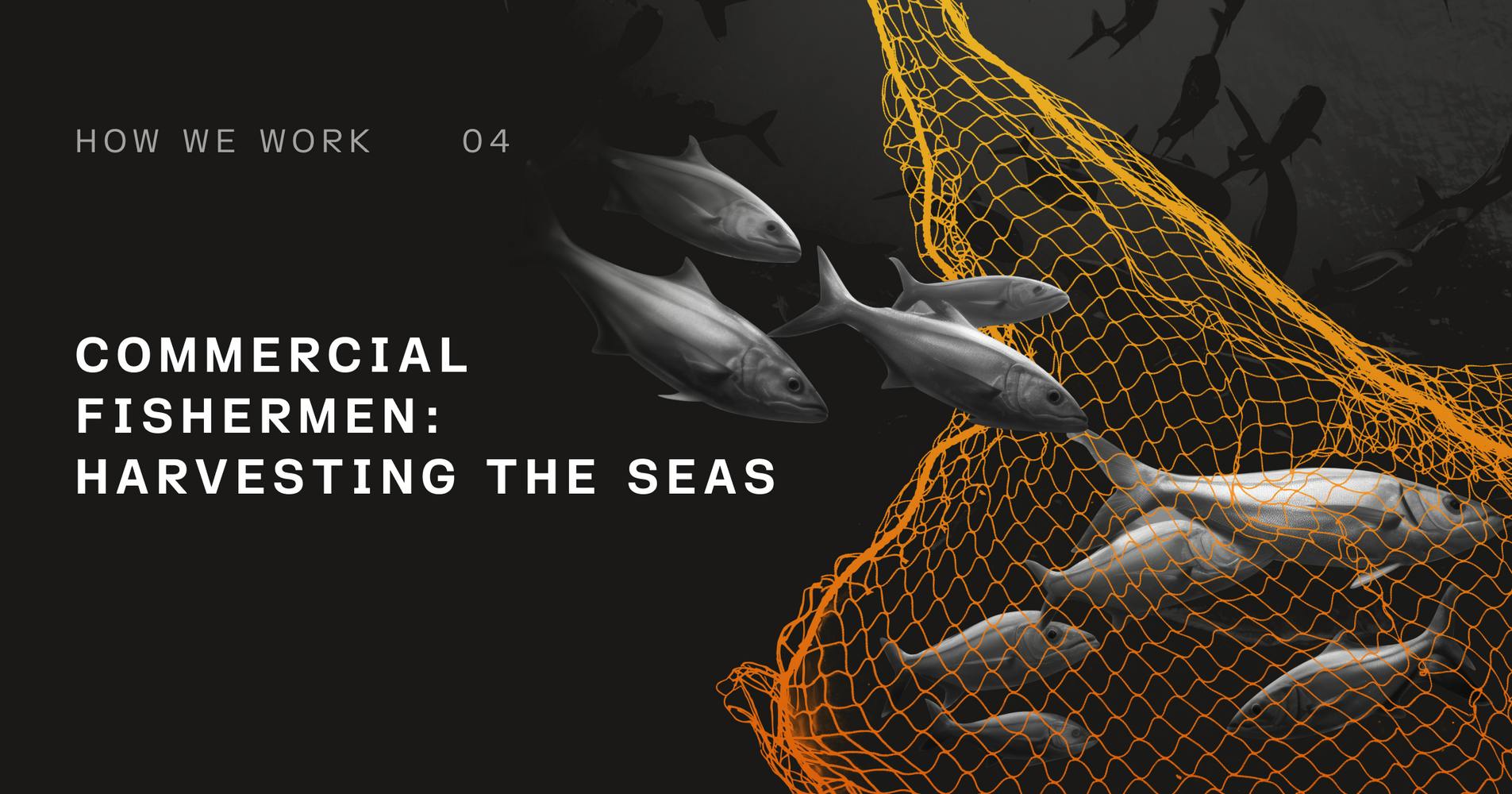How We Work is an interview and essay series by Contrary dedicated to surfacing insights about important parts of the economy that have gone unnoticed or under-explored by the startup ecosystem. It profiles the people who power the modern world and the tools, systems, and processes they interact with every day.
***
Fishing is among the most time-honored professions in the world, its roots stretching deep into human history. Today, over 3 billion people globally rely on either wild caught or farmed seafood as a significant part of their diet.
Commercial fishing, as distinct from subsistence fishing, began to emerge in the medieval period, particularly in regions like Europe where fish like herring and cod became highly sought after. Though fish and other seafood had long been consumed in coastal and riverine areas in Europe and globally, demand grew in rapidly growing urban areas. During the late Middle Ages, advancements in fishing gear—including improved nets and fishing lines—and enhanced preservation methods, such as salting, helped catalyze the growth of commercial fishing operations.
From the icy waters of the North Atlantic to the warm currents of the Gulf of Mexico, commercial fishermen in the United States brave the elements, navigating treacherous seas, unpredictable weather, and long hours in pursuit of their catch. Their work is physically demanding, mentally taxing, and fraught with risk. The fatality rate for commercial fishermen is over 40 times the national average.
Over the last few decades, the fishing industry has undergone a significant transformation driven by technological advancements, changing market dynamics, and an increased awareness of sustainability concerns. Enhanced sonar and GPS systems have made it easier to locate fish schools, while improvements in boat design and equipment have allowed for more efficient harvesting. At the same time, globalization and changing consumer appetites have opened up new markets, shifting demands and influencing the species most lucrative to catch.
One of America’s most productive fisheries, Bristol Bay in Alaska, consistently produces the largest sockeye salmon harvests in the world. Every summer, millions of wild sockeye salmon return to the rivers of the bay to spawn, supporting both commercial and subsistence fishing in the area. It is also one of the world’s most sustainable fisheries, with local fishery managers successfully ensuring enough salmon successfully spawn to support the next season’s harvest.
To understand the job of commercial fishermen and their place within the broader fishing industry, we spoke to Corey Arnold. Corey is a commercial fisherman who has been based in Alaska for almost three decades. Now largely fishing for sockeye salmon in Bristol Bay, Corey also spent time as a Bering Sea crab fisherman and appeared in the second season of Discovery’s Deadliest Catch.
Corey is also a renowned and award-winning photographer whose work has been exhibited widely and has appeared in numerous publications. His photographs appear throughout this article.
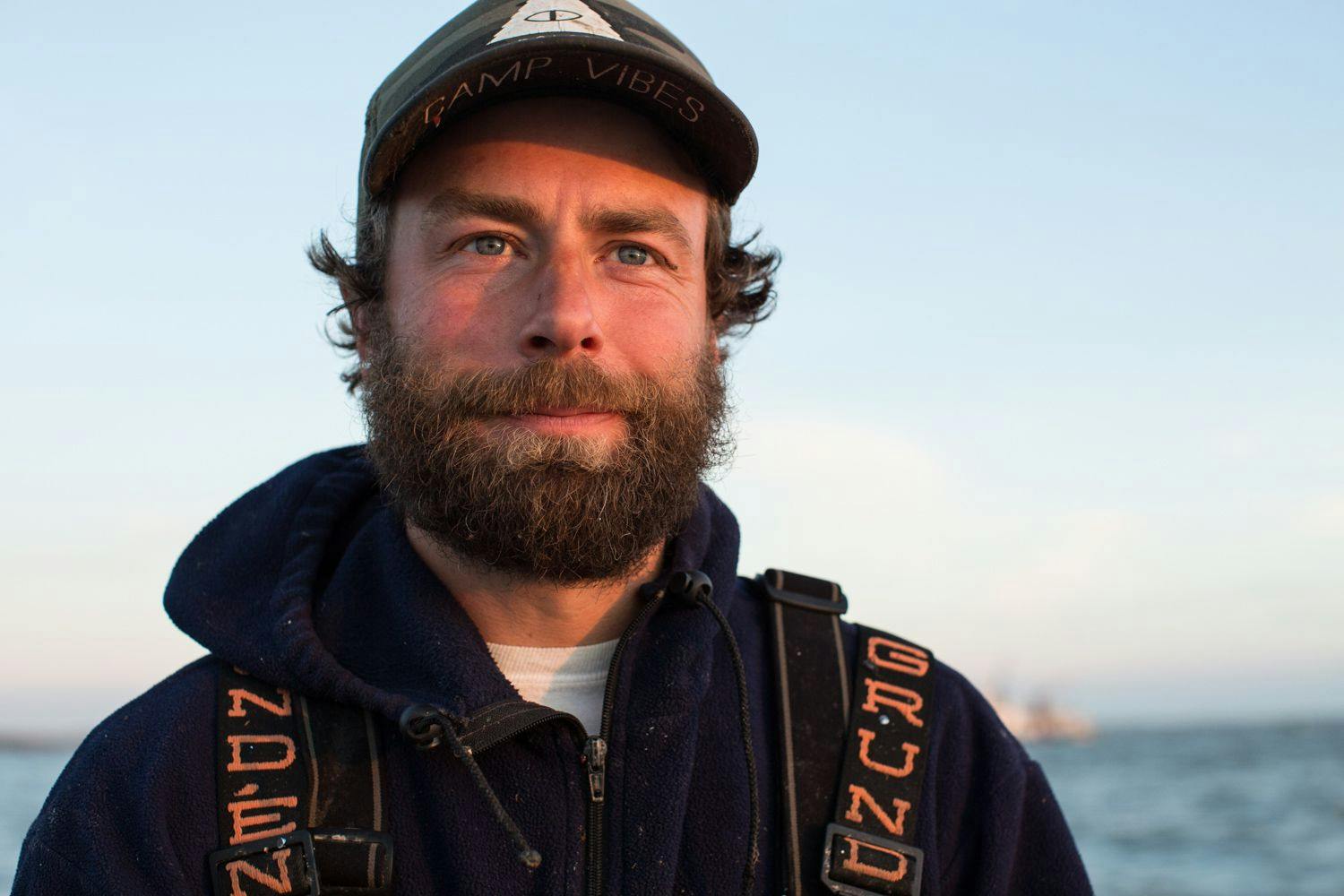
Four key insights
1. Fishing is still an old-school “wild west”, and the work is hard labor.
Commercial fishing is divided between larger ships equipped with a substantial crew and corporate operators and smaller boats run by small businesses, many of which are family-owned. Corey, who works on a small set net salmon fishing boat, described the industry as one with little oversight or bureaucracy. Hours are long and the work can be physically demanding and monotonous.
Because fishing often occurs in specific seasons – with salmon fishing in Bristol Bay being concentrated in a two-month period with an even shorter peak time – it is often necessary to work long hours. Corey described one 36-hour stint during peak season where he and his crew only found an hour to sleep.
Most fishermen, whether working for independent operations or larger commercial vessels, are compensated through a "crew share" system rather than an hourly wage. Under this system, fishermen receive a percentage of the total value of the catch which ties their earnings directly to the success of the trip.
Corey says there are fewer people coming into the industry than there once were. While it was once common for college students from Seattle and elsewhere in the country to work seasonally in a cannery, this is no longer the case. There are also less people simply showing up and looking for work as a result of jobs advertised in online spaces like Facebook groups.
2. It’s a cyclical industry.
The fishing industry is highly globalized, and shifts in the world economy can have a profound effect. For example, the bulk of salmon caught in Bristol Bay fisheries prior to the 1980s was sold frozen to Japan, bolstered by huge demand in the Japanese market and a strong yen. However, as Japanese demand for US salmon declined, a new domestic market emerged. American consumers became more inclined to fresh, non-farmed salmon, which has generated demand for Bristol Bay’s product. This has driven technological adoption, such as the wider spread of refrigerated seawater systems to keep fish fresh for a discerning customer.
However, other exogenous factors have driven further “dramatic cycles” in the fishing industry. Increased salmon supply, driven by factors including a major sockeye harvest in Bristol Bay and increased production in Russia amid the war in Ukraine, has helped drive a glut of product to market. In conjunction with global economic headwinds, this has led to commercial fishermen receiving a third of the price for their product than they did a few short years ago.
3. Fisheries are becoming more focused on sustainability.
One key threat to local fishing industries is the risk of overfishing due to unsustainable management of fisheries.
The population of northern Atlantic cod, once among the world’s most important fish thanks to its wide consumption in Europe and North America, collapsed to 1% of historic levels in the early 1990s due to overfishing. This fishery collapse led to the end of the Canadian cod industry, with tens of thousands of job losses. A significant factor was the technological development of fishing trawlers, which resulted in unsustainably large yields. It is expected that the cod population will recover to sustainable levels by 2030, thanks to the use of quotas and moratoriums.
In 2022, Bristol Bay saw the largest salmon run in over a century of records. Of 76 million fish that headed upstream, 58 million were caught. Corey believes the sustainable management of local fisheries, which adhere very successfully to the principle of "maximum sustainable yield", is an effective counterexample to the common understanding of commercial overfishing.
Bristol Bay sockeye salmon fishing is particularly focused on sustainability. Fishermen and fishery managers in Alaska have developed a sophisticated understanding of how much of the salmon population in a given season can be caught and how much should be allowed to spawn successfully. They focus on maintaining a healthy, robust population each year.
This careful population management also relies on fish tracking and counting methods, including both sonar counters and people physically counting the number of salmon which head up the river to spawn. The fishermen of Bristol Bay also strictly adhere to fishing seasons, which are carefully planned to coincide with the salmon life cycle.
4. The use of technology varies significantly within the industry.
Technological adoption in commercial fishing varies by fishery, Corey said. In Bristol Bay, which is fished by thousands of smaller, family-owned boats, the use of technology is rudimentary and restricted mostly to simple tools like hydraulic rollers to operate set nets. Because salmon fishing largely takes place in known locations where the fish return to spawn, there is less need for sophisticated equipment.
However, in deep-sea commercial fishing vessels, advanced sonar systems, GPS tracking, and automated net and line handling systems are commonly used. Corey describes the extensive computer, camera, and sonar setups used by captains and crew of larger fishing trawlers, where locating schools of fish is a key part of the process.
Sonar tech is not foolproof. Corey cites the example of Bering Sea crab, which often don’t show up reliably on sonar systems, making identifying their population numbers less precise and prone to error.
Our full conversation with Corey
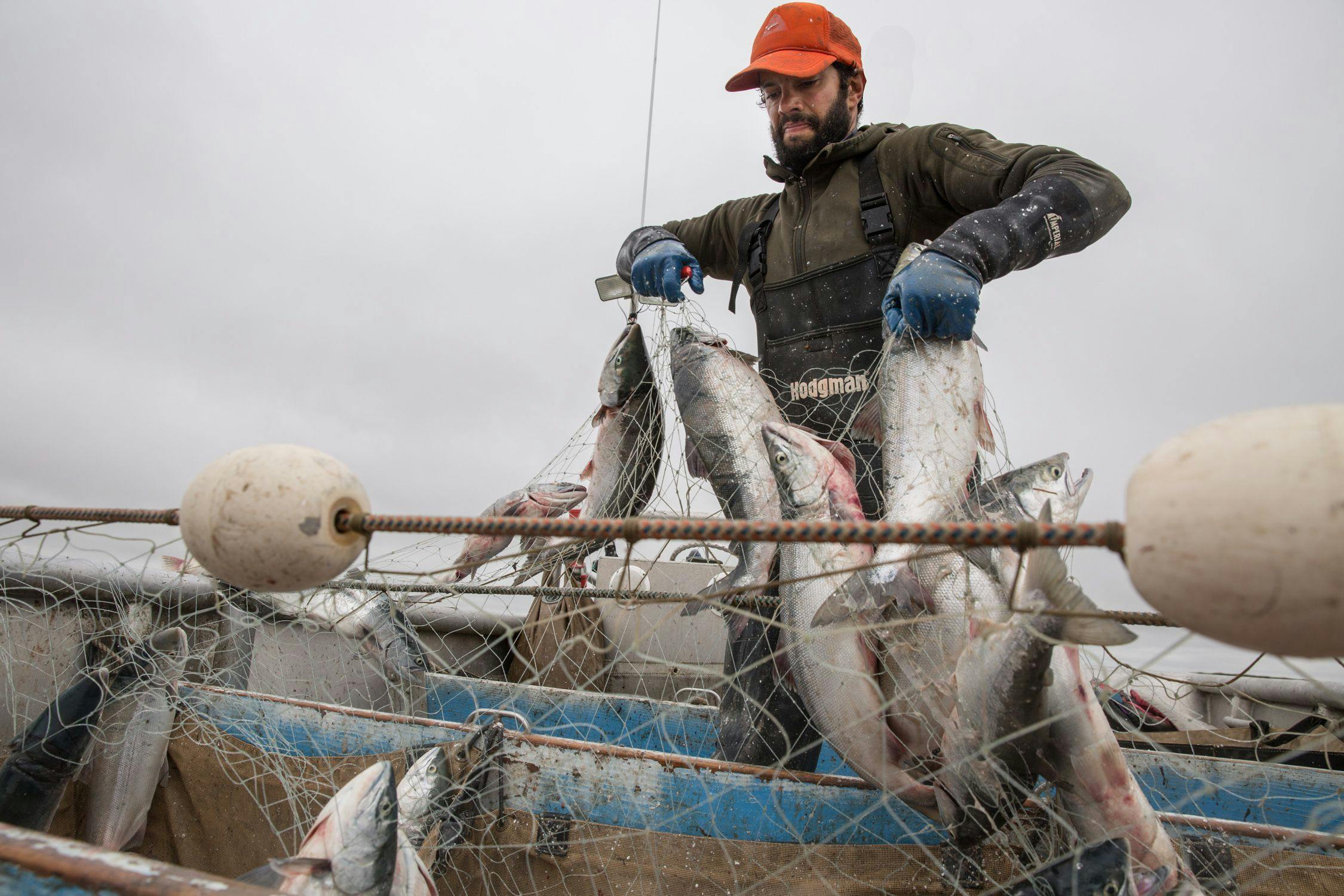
Introduce yourself and tell us how you got into commercial fishing.
When I was a little kid, my dad was really into sport fishing. We grew up in Southern California. He had a little boat and would take me offshore ever since I was wearing diapers. All just for fun, with a rod and reel. I got really hooked on it as my main pastime. I was a fisherman for Halloween almost every year, and I’d bring fish and sharks for show-and-tell at school. It became an identity for me. I was the fisherman, you know?
My dad and I started going to Alaska doing fishing trips for fun in the summers. That's when I discovered this giant commercial fishing fleet that's all over Alaska. I started to hear, “Oh, you make pretty good money fishing.” Eventually I went off to college in Flagstaff, Arizona, and that summer a buddy and I decided to drive to Alaska and look for commercial fishing jobs. We didn't really know how to do it or how to get a job, but I was savvy with boats from back in Southern California.
We flew up to Homer, Alaska and started walking the docks. That's just kind of how people said you had to do it. You just show up and you walk the docks and you talk to people at the docks and ask for jobs.
It turned out we went to a place during the wrong time of year, and it wasn't the right fleet. So we were asking all these Russian fishermen for jobs. There was a huge Russian fishing fleet in Homer, and they only hired Russian family. So there's no way that would work.
Anyway, I put my name on a bulletin board in a bathroom and I got a call that night and this person said they were flying to Bristol Bay, Alaska to fish salmon in the morning. They had lost their deckhand at the last minute. I met with them that night and the next morning I was on a flight to Bristol Bay.
That’s how it all started. That was a set net camp fishing for sockeye salmon, and it was a really rustic experience. The grandmother of the operation flew me in a little tiny plane and we landed on a dirt runway on the tundra, in the middle of nowhere, hardly anyone else around. I lived for like a month and a half out there. We lived in these shacks, and we fished in little aluminum boats offshore, delivering our fish to a vessel called a tender boat.
So all your training was essentially on the job, learning from people who had been doing it a while?
Yeah. These set net operations are often family-run, and that's the only kind of fishing they do throughout the year. While you can make a lot of money — and some people make a full living off during this type of fishing — there's also a lot of families that do it for just a little bit of income. It’s an Alaskan lifestyle thing.
So I got in with this family that had been doing it for a while. But then by tapping into the bigger boat fisheries, I eventually started crabbing and working with all these other fisheries in Alaska.
Is there a big difference between the kinds of fishing that is done in large commercial vessels versus smaller operations?
Yeah, it's really different.
So there's the biggest boats. Those are factory trawlers. Those will have a crew of anywhere from like 30 to a hundred people who are processing fish on the boat. They’ll have a crew on deck, and those boats are working year round. You're working like two months on, two months off all year. Those boats have a big corporate kind of feel — lower paid, factory worker type labor. That's wildly different than the Bristol Bay salmon fishery, where it's 2,000 small boats, each one its own little family business or small business operation, with crews of two to five people per boat.
Then there’s crabbing, which is a 100 to 120 foot boat with a crew of six or seven which is fishing for crab or cod and some other stuff, but is also independent and maybe family-owned too. It's not a big company owning it. There’s different attitudes between the fisheries. The crabbing fleet all kind of think of themselves as the toughest, doing the most dangerous work.
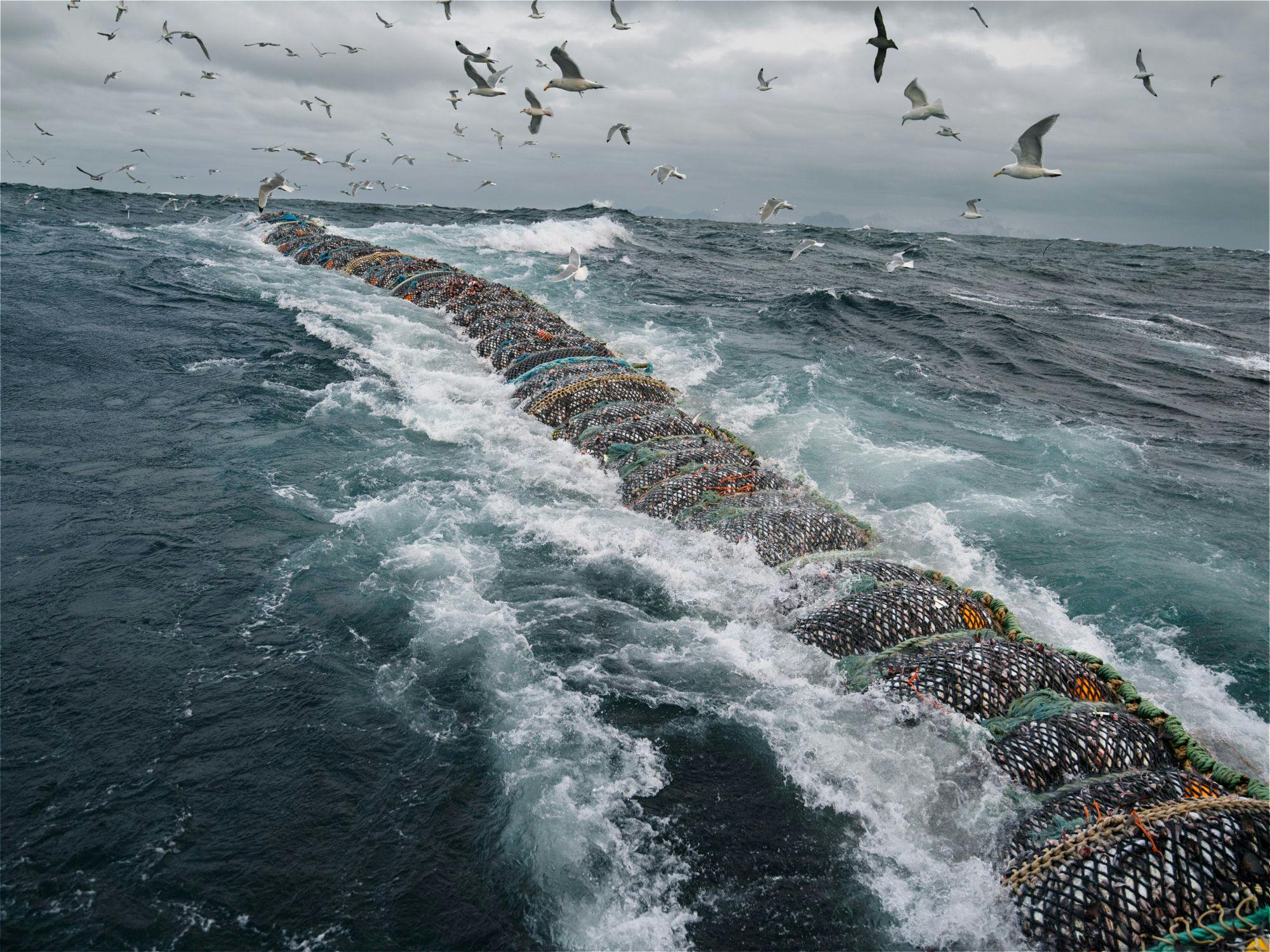
The Deadliest Catch thing, right?
Totally, the Deadliest Catch thing. [Crab fishermen] look at the pollack fishing boats as the easiest jobs. They’re catching tons of fish, they’re making tons of money, but it’s not quite as dangerous. They get to sleep while the net's in the water, and it’s not as physical.
So it's a job that crabbers maybe want to retire to, or they have pooh-poohed because it's not a tough enough fishery.
You’ve spent time crabbing. Is it accurate that it’s the most difficult work?
Yeah. I crabbed for seven years, and I worked for the same boat all the way through. It was a Norwegian-owned family boat. It was definitely the hardest, the scariest.
It depends on your captain. Our captain was just a grinder. We’d get very little sleep, because if you’re sleeping you’re not making money. You know, are you the type of person that wants to be on a boat that makes a little less money and you actually get a good night's sleep, or do you want to be on a boat that makes a lot of money and you barely sleep? That’s the question.
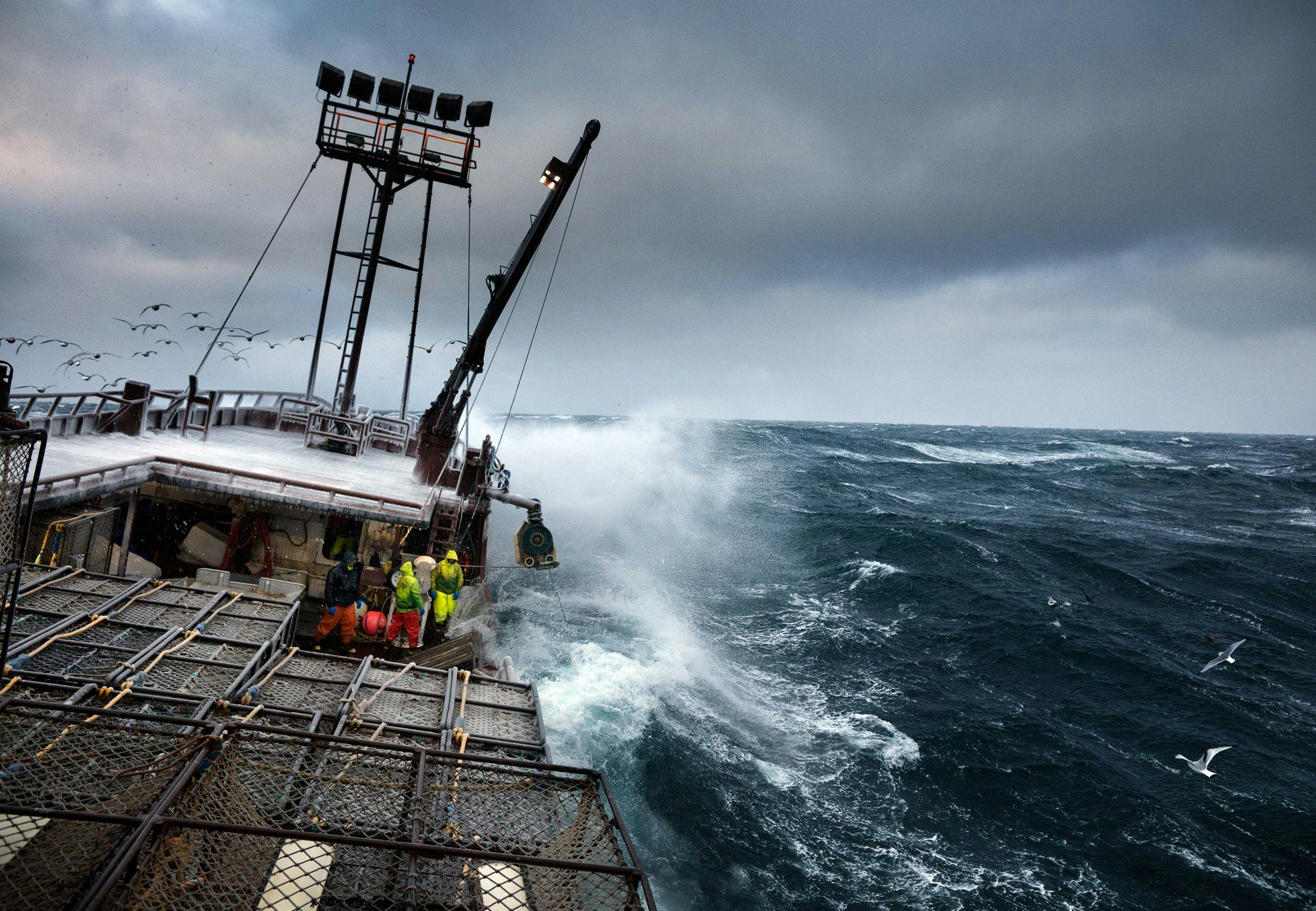
I noticed that many people who describe themselves as commercial fishermen in Alaska only work seasonally, and actually do something else throughout the year. Is that normal, or are there people who do it all year round?
There are definitely a lot of people that are fishing year round.
So, Bristol Bay where I fish now — it’s a very short season and there’s a lot of boats. It's the biggest sockeye salmon fishery in the world. Like I said, there's almost 2,000 boats or pretty close to that. Your commitment up there can be as little as six weeks. A lot of people do just that, and then they have real jobs the rest of the year. And some people come up and will work just a month — they'll take their vacation time just to go fish that month.
But a lot of the other fisheries with the bigger boats… to pay the bills, they gotta work year round. So you'll have captains rotating to keep the boat fishing all year as much as possible.
This is a basic question, but are there specific seasons for the different kinds of fish you’ll be catching?
Yeah, it's very specific.
Salmon is one of the biggest fisheries in Alaska, and that’s very much a summertime thing. In Bristol Bay, you're catching the fish as they're going up the river to spawn, so it's only June and July when you can catch them. Right after that, there's other rivers in different parts of Alaska where you can catch. That season's peak is like early August. So there's only a four month period for the most part that there's salmon running in all of Alaska — different times in different places.
Then you've got like crabbing, which is very much a winter thing. You've got several different types of king crab. Golden king crab they can fish all year round, though there’s only a handful of boats with the permits to do that. Then you've got red king crab, which happens in October and November. Opilio crab is January through April.
So everything’s divided up. For crab, it’s when the meat in the shell is fullest. Crabs molt and get a bigger shell, but it takes a while for their muscle and their meat to fill it up.
Talk me through a day in the life of a commercial fisherman when you're out on the boat.
Let me give you a day in the life of a salmon set netter, which is what I primarily do right now. Here's a day at the very peak of the season, which might be a two-week period when it's the busiest.
I wake up in the little abandoned cannery that we live in, eat breakfast real quick, put on our rain gear and gloves and everything, take snacks, and plan to be out for maybe 10 hours or so. We walk to our little 23-foot skiff, and it’s usually three of us in the boat. We jump in and pull out through these low-tide mud canyons that go out into the bay, and we'll set nets out on the mud.
Then the tide starts coming in and the fish start hitting, and we'll start picking through the nets and filling up our boat with fish. During the peak we're filling our boat with maybe 5,000 pounds at a time and delivering every two and a half to three hours. Then we're coming back to our nets, filling up again, and delivering it.
If it's the most happening days of the season, we might fish for eight or nine hours, then go in and eat. By the time you get to sleep, you might get two hours of sleep. Then you repeat the process twice a day. Maybe you get a couple of two-and-a-half hour sleeps in a day, if you're lucky. We had one 36-hour stint this season where we got maybe an hour snooze.
You definitely start to go cuckoo. I'm trying not to do that, for our brain health. But when you’re catching the majority of your fish for the whole season in a 10-day period, it's pretty hard to sleep — because for every hour you’re asleep, you’re missing thousands of pounds of fish and thousands of dollars.
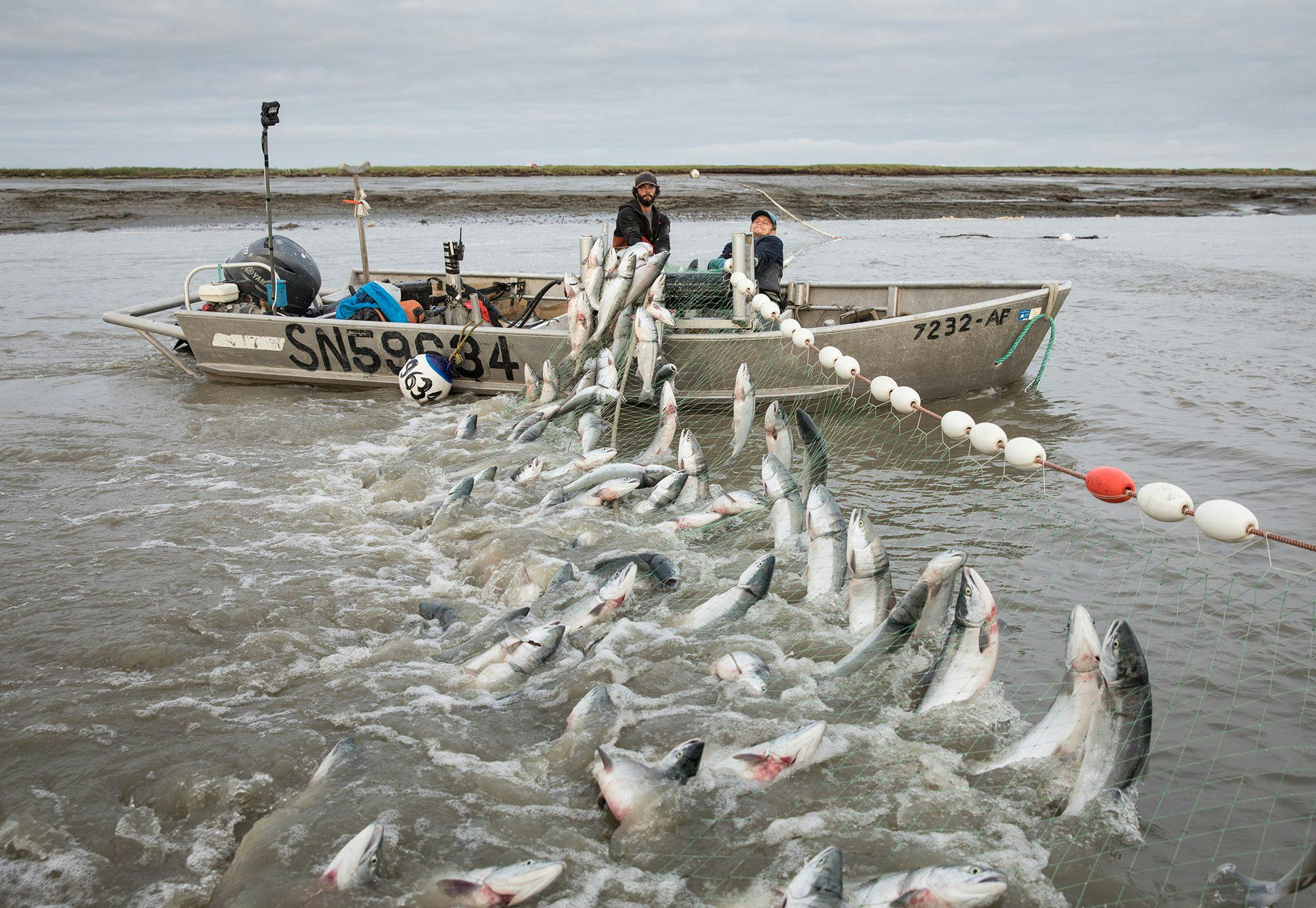
When you take the fish in, where are you taking them?
We take them to tender boats that are anchored offshore in front of where we fish. And we put the fish in brailer bags, which are mesh bags with handles. They weigh about 800 pounds each when they're full. There's a crane on the boat that cranes it off and puts it in their giant tank. A tender might hold 100,000 or 200,000 pounds of salmon.
That boat will travel two or three hours back to the main little town, called Naknek, that has a whole bunch of fish processing plants. There's a big vacuum pump that sucks the fish out of the tenders up onto the dock and it goes right into the plant in giant holding tanks.
From there, everything goes onto a conveyor belt and then hits the filet lines. It used to be that a lot of salmon was canned, but that market has mostly died. Fresh or frozen filets is pretty much the main market in Bristol Bay.
There's other companies that do head and gut — it's called H&G — and then they freeze the headed and gutted salmon. Those are often sold cheaper and they get reprocessed.
Is there any technology — hardware or software — that you’re using in your job?
In my Bristol Bay fisheries, we don't. It's a fairly minimalist setup. We just use hydraulic rollers to move our nets, things like that. One thing I'm starting to see at fishing trade shows is that they’re toying around with electric outboard motors. Very curious if that's ever gonna be possible, because those things are pretty big and heavy. It’s a weight issue when it comes to small boats.
I know that with the crabbing fleet and all the offshore fleets the use of technology is pretty insane. You look at a captain's chair for a polar trawler and it's just a wall of screens wrapping around them and another set of screens, and it's radars and multiple sonars that are shooting out, and there's deep water cameras that are filming the fish going into the net and there's sensors everywhere going off at different times. So sonar and camera technology is essential in a lot of fisheries.
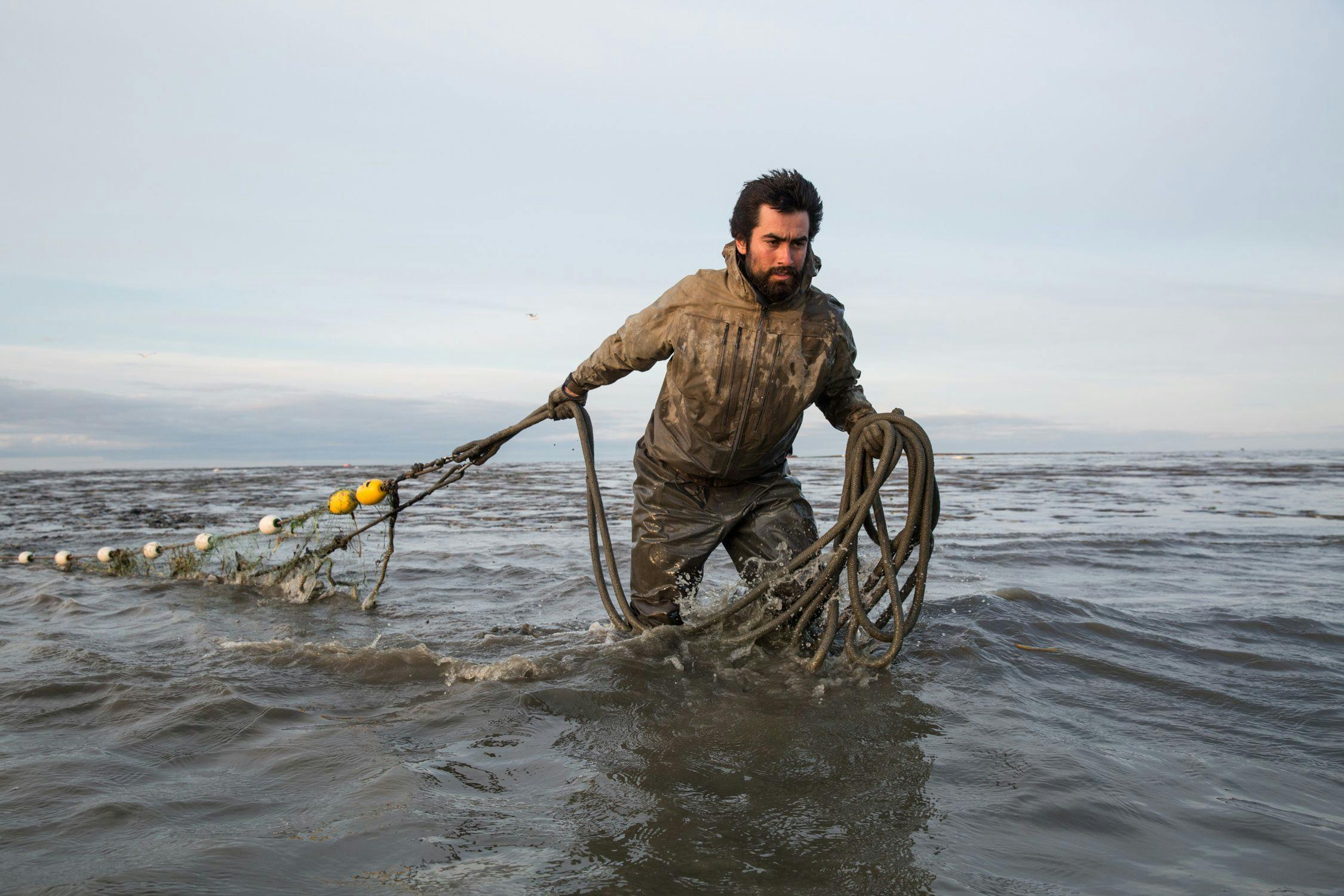
You’ve been doing this a while. Has anything changed about the job over the time you’ve been doing it?
There's been a ton of changes, because there's much more focus on quality.
The market has changed, too. The heyday of Bristol Bay was in the '80s when we sold most of our fish to Japan. The yen was very strong back then. You might be getting $2.50 a pound back then. This year we only got 60 cents a pound and it's decades later. So those guys were getting really rich back then. But it's a fast and furious fishery. It's hard to catch a lot of fish while keeping the quality up. So there have been changes to help that. There's been a big movement towards refrigerated seawater (RSW) systems, which keep the fish much fresher. Everything is bled now, where it wasn’t always the case.
The market shifted from canned fish and selling to the Japanese to the domestic market. When the Japanese market started to die, there was a big push to get Americans eating salmon. And they did once farmed salmon hit the shelves and they got used to eating it as a normal seafood.
Then, as people learned that farmed salmon is not so good for you and it's not so good for the environment for a multitude of reasons, they also realized that what we catch in Bristol Bay is pretty much one of the most sustainable, successful fisheries in the world. We've had, in the last decade, three of the largest returns of salmon in history. And that's over 120 years of records.
What are you doing in Bristol Bay that makes it sustainable, in your view?
A lot of it is just the science-based approach. In Alaska, the fishermen respect the fisheries managers. It doesn't work like that in a lot of places, like in Europe. It's a little easier in Alaska because in Europe, for example, the North Sea and all the waters offshore are all divided up, with all these countries fighting for the same fish that are swimming through all these different countries' waters. Alaska is so vast that a lot of the fish are staying in the same area.
In Bristol Bay, it's different from, say, tuna fishing. When you're in the open ocean, if you're trying to guess how many tuna are in the sea, how do you do that? Those fish are just all over. They're swimming deep. They're traveling huge distances. How do you possibly measure how many are out there?
With salmon, every three to five years they're going back to the river to spawn. We've got sonar and sonar counters in all the rivers. There are people physically there with little clickers watching fish go across, counting how many fish are going up to spawn. And the managers are opening and closing us on a daily basis depending on how many fish they're getting up the river. So they always need to guarantee that they got enough fish up the river to spawn and have a similar return. If there's not enough fish coming back, they'll just shut us down and we won't be able to fish until they get enough up the river and they feel comfortable, then they'll open us back up.
Just last year we had the largest run in history. The fishermen caught maybe three quarters of all the fish that returned to the bay. I can’t remember the exact numbers, but there was something like 79 million fish that came back, and I think the catch was over 50 million. You can catch that much of the biomass and there's still plenty of fish spawning to be able to have a productive return years later.
A really odd fact is that if we let all those fish go up the river instead, and we don't catch them, then they will unleash so many eggs that when they all hatch it sucks up all the oxygen and the food and then there's mass die-offs. There's an equilibrium there. After a hundred years of paying attention to this, managers know how many fish you want to head upstream. There’s a base amount you want in, but there’s also a ceiling.
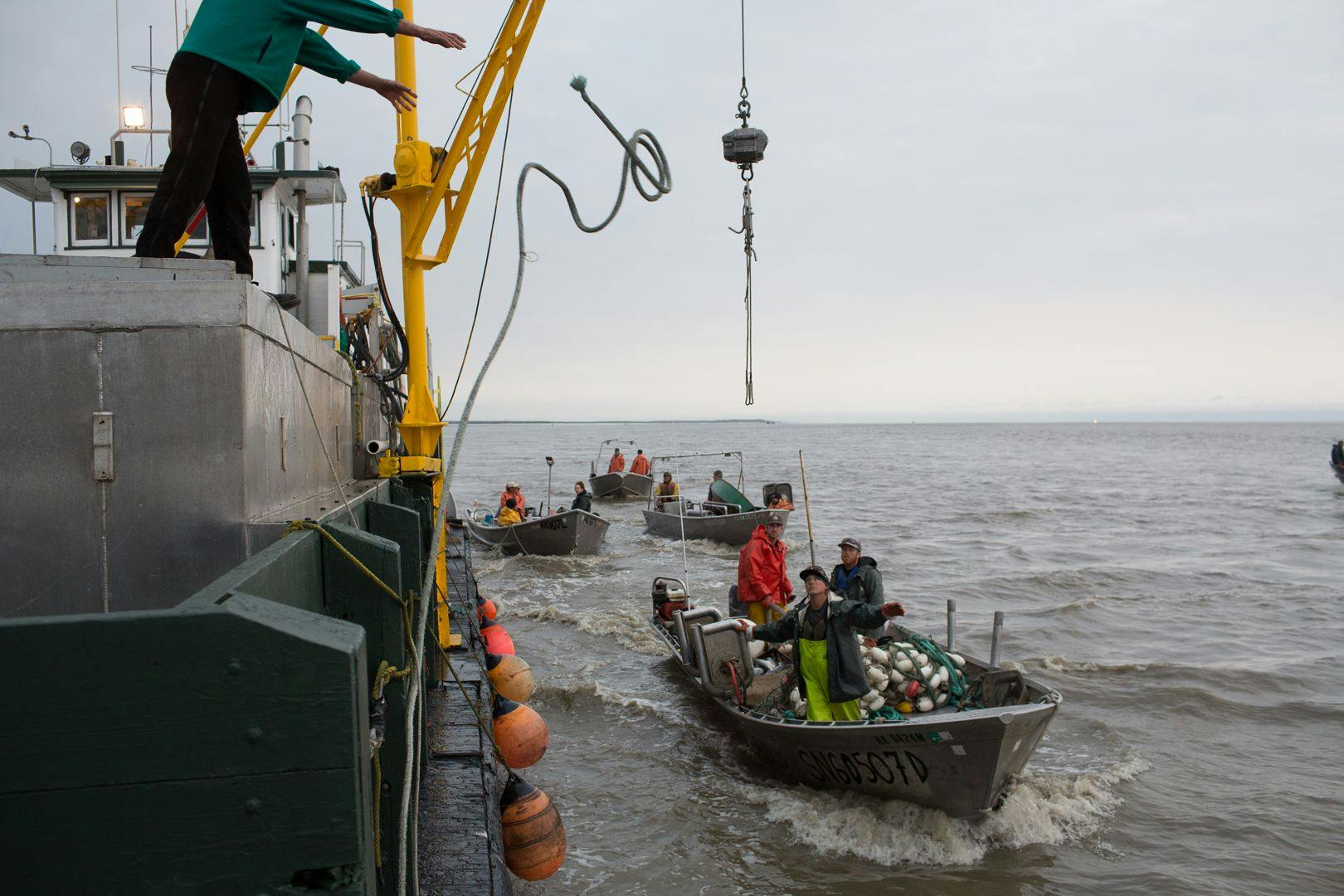
Is there any sort of process, technological or otherwise, you use to track where to fish and how to fish? It sounds like with salmon you are catching them while they’re going upstream. But what about other fish?
In Bering Sea crabbing, for example, there’s traditional grounds where crab all live. (For whatever reason, like the currents or the topography of the sea floor.) They all have their own little territories and they migrate around, but there's still like a main area traditionally that's been discovered by the fishermen.
Every year [the Alaska Department of Fish and Game] releases the quota numbers that the fleet is allowed to catch based on how many crabs they think are out there. They do that by doing a trawl survey, where they take the traditional grounds for the red king crab and every certain number of miles they drop the net, drag it for 10 minutes on the bottom, pull it up and count the crab. It’s very primitive the way they do it. It's not that accurate because the crab travel in these very dense schools sometimes. They’re averaging the whole Bering Sea, but they might have missed a lot of the big balls of crab.
It's not as exact of a science. It's a little more of a guessing game. They did a survey once and said there wasn’t going to be that much, but the fishermen got out there and they’re like, “There’s crab everywhere”.
Figuring out a way to properly measure those crabs with sonar or sending a drone down there and somehow counting them would be amazing. It’s the same for other fish. There's a lot of different ways to do it, like sonar, but using technology for counting fish in general and knowing for real how many fish are in the water in different regions would be just massive for keeping things sustainable.

Before you mentioned that the traditional way to find work was to walk the docks and ask people for jobs. Has that changed? How do fishermen find work now?
It was 28 years ago when I first did that, walking the docks. And back then, that's what everyone was doing. There was no social media and internet. It’s a lot different now. You just don't see people walking around asking for jobs very much anymore. There's a lot of people through Facebook groups connecting.
There’s still a lot of word of mouth. I meet people throughout the year and talk to them about it and they show interest and I'll bring a new person up. I often like to hire people that have done other fisheries before, but if I feel a lot of promise in someone new that has experience doing manual labor and whatnot, then I'll give them a shot.
I get hit up a lot because I have an online presence through my photography — people asking me for a job or how they can get a job, or if I can give them a job. A lot of people wanna do it for the adventure or they think it's like a cool thing. They want to try it once and say that they did it, you know. I want to fish with people that love it and want to do it as a lifestyle. I don't want people that just want to come and dip their toes in it and then bail out.
There’s a lot of people who are inspired by Deadliest Catch and other shows that glorify it. The reality is that fishing is very mundane drudgery a lot of the time, you know? I love it. I love the strategy and I love the hard work, but it's painful and it's the same. It's a lot of repetition and lack of sleep drives people insane, and it makes people completely break down who are really tough otherwise. It's not as romantic as it looks most of the time.
Another entry is to get a job in a cannery. Terrible, terrible work, and low paid. You're living in a dormitory doing factory work, but it's a way to get you there. They’ll pay for your plane ticket. If you have any free time at all, you can run around and ask boats for jobs. That's still a way.
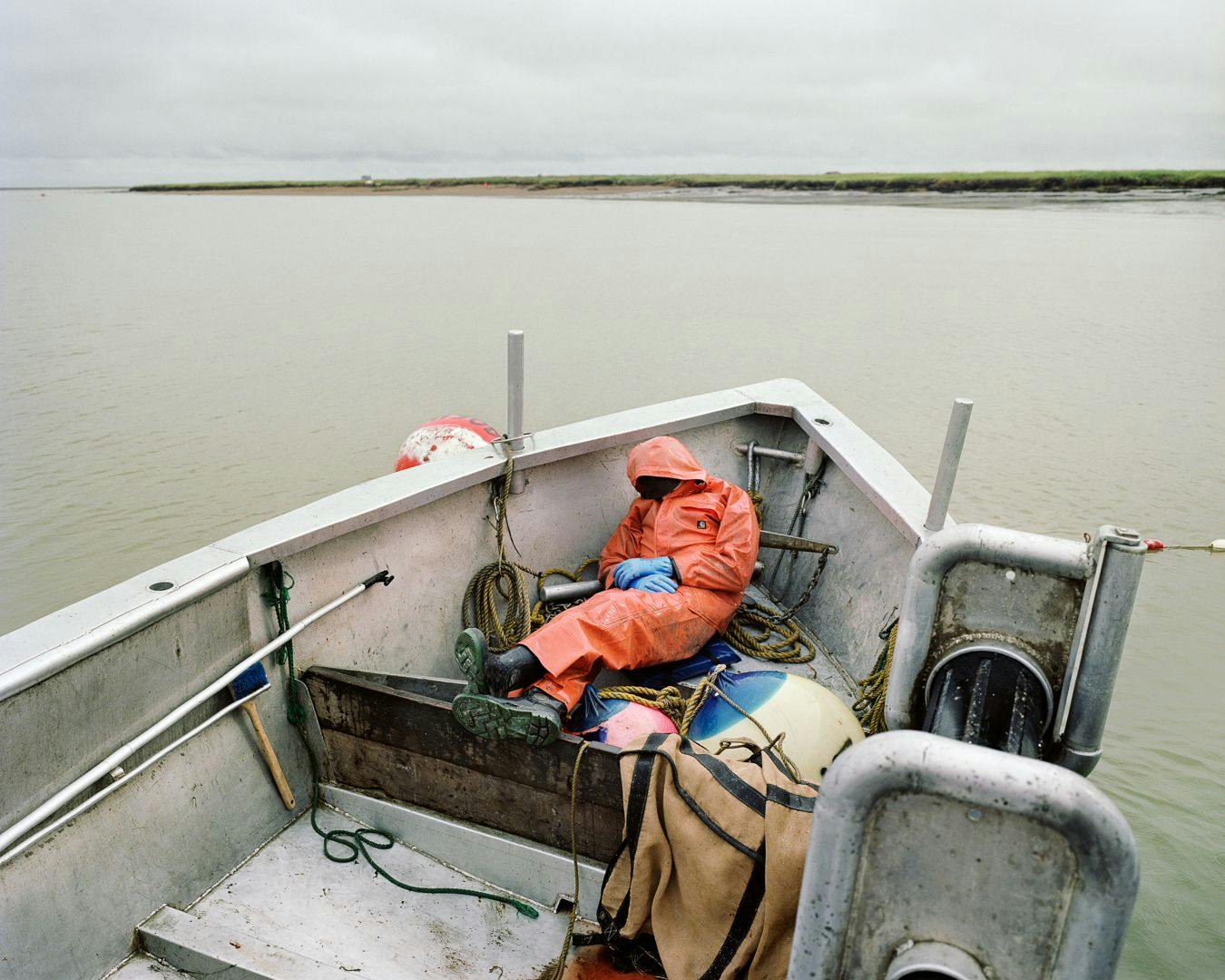
One common theme in How We Work is that many industries are facing the problem of knowledge transfer — a retiring old guard unable to pass hard skills onto a generation raised with automation. Is that an issue with commercial fishing?
I think it is. I do think there are less people trying to do this kind of work. The demographics of the cannery workers has completely changed, for example. It used to be a lot of college kids from Seattle and around the country, who would work in the summer. Now it’s almost exclusively immigrants.
One thing that is really different about fishing is it still feels a little wild west. We’re not thinking much about OSHA rules like when you work for a big company. It's like, we're all a bunch of guys doing this crazy work, where all the workers are working for a percentage. They’re not getting an hourly rate. We’re working these crazy hours, and you can’t do that as a big company. That's kind of what I love about it.
Is it still a well-compensated job?
Yeah, and it can be really good. It just depends on how well-run your operation is, how hard you want to work, how little you want to sleep, and how much you pay to maintain your equipment. In the fishery I do, there's people barely scraping by and there's people that are living the whole year off that income. There are boats called highliners, which are what they call the top boats, making small fortunes.
That said, we had a dramatic price fall this year. We got 60 cents a pound for our fish. Last year we got $1.30 a pound. The year before that was like $1.80. So, in just a few years, we’re getting a third of the price.
Is that price reduction an anomaly, or representative of a longer term decline, do you think?
I think it's a bit of an anomaly. There are a few reasons for it. Last year, we had the largest run in history, so there was so much fish on the market they weren't able to sell before this year's fish came on. So all the wholesalers were sitting on this fish and paying for freezer storage for a whole year, with this huge new batch coming in. So there was a fire sale of all that old fish, and retailers were buying it for super cheap. Meanwhile, no one's buying the new fish and it's got the market all whacked.
That's the supply and demand part of the equation. They’re also citing the war in Ukraine as one of the reasons we're getting low prices. Russia is actually a larger producer of salmon than the US is. It accounts for half of the world’s wild salmon. Apparently they're trying to fund the war in Ukraine and they are selling their salmon cheap on the world market, and that's bringing the whole market down.
There’s also just the general jitters in the economy. Salmon is not that expensive, but it's still considered a more luxury meat, and people stopped buying luxury meats. So we've got like a triple whammy. There's a few different things, and we got the lowest price in history this year.
Is there anything else you'd add about the industry and its future?
I'm concerned about ocean acidification. I know there's some people extremely alarmed about it and there's a lot of people not talking about it. But that's just a concern in the future.
As far as the industry, I think people need to just understand that there's a lot of dramatic cycles in seafood in general. The ability of the oceans to rebound from a down cycle is pretty amazing. We've seen it happen in all the fisheries in Alaska, booms and busts. But the management of Alaska fisheries in general is a good example for the world.
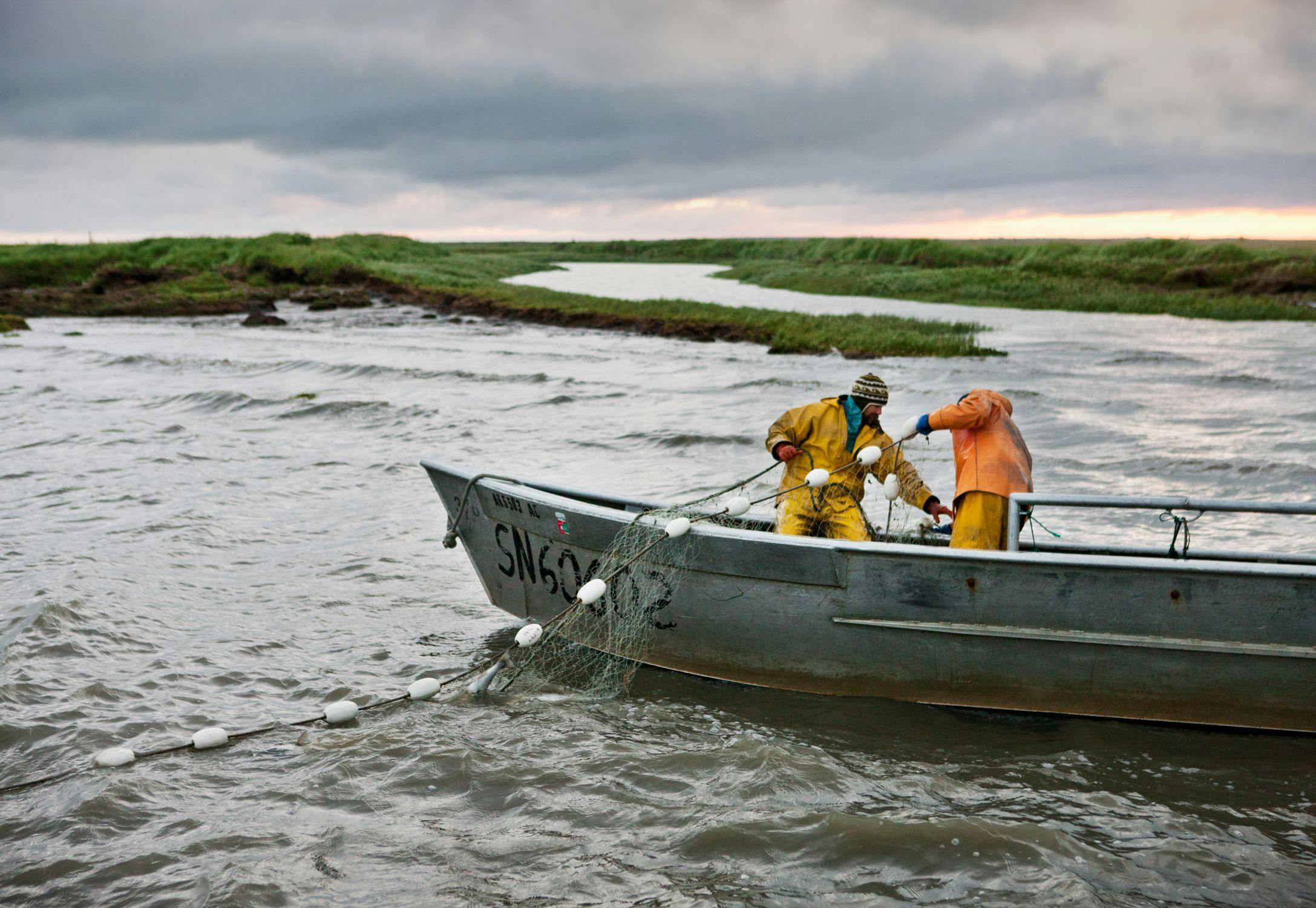
Takeaways for founders
Founders interested in the fishing industry might identify several plausible opportunities.
Effectively counting marine populations
The number one problem specifically called out by Corey is the unreliability of existing methods for counting populations of fish and crab. Some fish, like salmon, are able to be reliably counted due to their predictable population movements, but deeper sea populations like tuna and crabs often require educated guesswork. Alaskan fish and game regulators use manual processes to estimate the number of crab available for catch, which may not be accurate.
Despite advancements in this space, current technology does not provide a full account of the number and type of fish in a given area. Corey says that survey technology or solutions which would make it possible to have a better picture of how many fish are in a particular area would be “just massive for keeping things sustainable”.
New boating technology
As Corey highlighted, there have been recent moves to introduce new technology like electric motors to boats. Companies like Evoy are exploring higher-powered electric motors, but concerns like weight and range have kept adoption in the fishing industry low. Space and weight are often in scarce supply on fishing vessels, and range and durability are essential for commercial fishermen.
Similarly, the strong demand for large quantities of fresh fish also raises the possibility of improved technology for post-catch preservation and refrigeration.
Sustainable aquaculture
Farmed fish, like salmon, remains popular in the United States, but a growing body of evidence suggests that it may be both environmentally harmful and unhealthy – with studies finding a higher level of carcinogenic chemicals like polychlorinated biphenyl in farmed salmon as compared to wild salmon.
The ongoing strong demand for seafood and fish products raises the possibility that more sustainable aquaculture solutions which offer the quality and quantity of fish demanded by the market.
Job networking
Work in the fishing industry is often shared by word of mouth, with business owners and prospective employees connecting on bespoke networks like Facebook groups. Traditional methods of finding work – such as bulletin boards and walking the docks – have been largely deprecated.
There could be an opportunity for a modern job networking solution for the commercial fishing industry which accounts for its unique needs and labor system. This may also help in bringing new talent into an industry that has seen demographic shifts and an aging workforce.
Disclosure: Nothing presented within this article is intended to constitute legal, business, investment or tax advice, and under no circumstances should any information provided herein be used or considered as an offer to sell or a solicitation of an offer to buy an interest in any investment fund managed by Contrary LLC (“Contrary”) nor does such information constitute an offer to provide investment advisory services. Information provided reflects Contrary’s views as of a time, whereby such views are subject to change at any point and Contrary shall not be obligated to provide notice of any change. Companies mentioned in this article may be a representative sample of portfolio companies in which Contrary has invested in which the author believes such companies fit the objective criteria stated in commentary, which do not reflect all investments made by Contrary. No assumptions should be made that investments listed above were or will be profitable. Due to various risks and uncertainties, actual events, results or the actual experience may differ materially from those reflected or contemplated in these statements. Nothing contained in this article may be relied upon as a guarantee or assurance as to the future success of any particular company. Past performance is not indicative of future results. A list of investments made by funds managed by Contrary (excluding investments for which the issuer has not provided permission for Contrary to disclose publicly as well as unannounced investments in publicly traded digital assets) is available at www.contrary.com/investments.
Certain information contained in here has been obtained from third-party sources, including from portfolio companies of funds managed by Contrary. While taken from sources believed to be reliable, Contrary has not independently verified such information and makes no representations about the enduring accuracy of the information or its appropriateness for a given situation. Charts and graphs provided within are for informational purposes solely and should not be relied upon when making any investment decision. Please see www.contrary.com/legal for additional important information.

